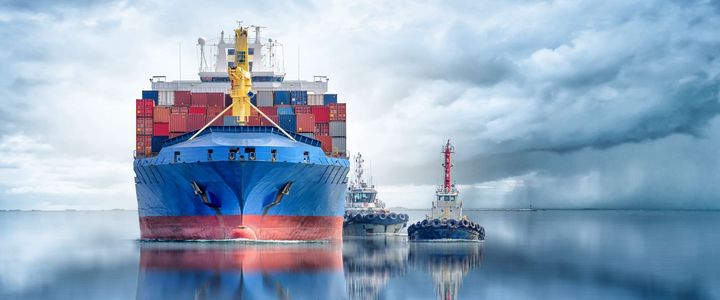The dynamically developing International maritime transport industry contributes to climate change. In order to reduce CO2 emissions in the maritime shipping sector, the European Union passed Regulation 2015/757.
This primarily serves as a way of addressing the current situation, and is intended to deliver an overview of the actual energy consumption and emissions of maritime shipping. Initially it does not involve an obligation to reduce these, but does imply expectations of reduction.
Target Group
Maritime shipping owners or operators with vessels above a size of 5000 GT (gross tonnes), which wish to dock or undock cargo or passengers after 1st January 2018 at ports located within the EU, must satisfy the requirements of the new EU regulation. The new TÜV NORD (TN) CERT service according to the Maritime Transport MRV Regulation is targeted at all effected companies in Germany and other countries that must fulfill this obligation.
Requirements
The basis of reporting of the emissions is a Monitoring Plan in which the procedure for the determination of the data to be reported and which then becomes legally binding is bindingly defined. This must correspond to the requirements of Implementing Regulation 2016/1927.
To ensure this, it is subject to mandatory audit by an accredited auditing company. The assignment of the audit must have been made by the end of August 2017 at the latest. By the start of the reporting obligation period (starting 1st January 2018), all affected vessels must then have an audited monitoring concept in place.
An emissions report will have to be prepared for the first time for the year 2018. This must satisfy the requirements defined by the EU both formally and in terms of content, and must be verified, i.e. audited, by an independent and accredited auditing company. The verified emissions report must be submitted by the end of April 2019. The same shall apply for the following years.
After the successful verification, the auditing company shall prepare a certificate of conformity recognized throughout the EU, which must be presented to public authorities upon request.
Audit Cycle
By 31st August 2017: preparation of a monitoring plan by the shipping operator (one-time preparation in 2017 for "existing vessels", and then for new ships). |
By 31st December 2017: audit of the monitoring plan by an accredited auditing company. |
2018: start of emissions monitoring and first report. |
By 30th April 2019: Submission of the verified Emissions Report to the EU Commission and Flag State |
Audit Procedure for the Monitoring Concept
Assessment of the use of correct templates |
Audit of the completeness of documentation |
Audit of all emission sources, measurement devices, processes and systems for monitoring and reporting, and their relevance and suitability for monitoring CO2 emissions. |
Onsite audit (including document review, onsite inspections, interviews, analytical processes, and other relevant audit techniques) - where possible |
Independent review of the audit results by an additional designated auditor for maritime transport |
Written confirmation of the audit result |
Audit Procedure for the Emissions Report
Risk analysis |
Creation of an audit plan (including procedural plan, verification activities and scope, and random sampling plan for data) |
Audit of the monitoring and reporting system described and approved in the monitoring concept |
Analysis of the effectiveness of the monitoring activities described (e.g. by random sampling) |
Audit of data regarding completeness, consistency, reliability, and precision |
Onsite audit (including document review, onsite inspections, interviews, analytical processes or other relevant audit techniques) |
Provision of information to the shipping operator regarding non-conformities |
Preparation of internal audit documents |
Identification and communication of potential for improvement |
Audit report / verification report |
Independent review of the audit results by an additional designated auditor for maritime transport |
Preparation of the certificate of conformity recognized throughout the EU |
The Path to the Certificate of Conformity
Request |
Submission of quotation by TÜV NORD |
Placement of order with TÜV NORD |
Risk analysis |
Preparation of audit plan |
Audit (typically onsite at shipping operator premises) |
Non-conformity management (if required) |
Preparation and communication of the audit report, and information regarding confirmation of conformity |







